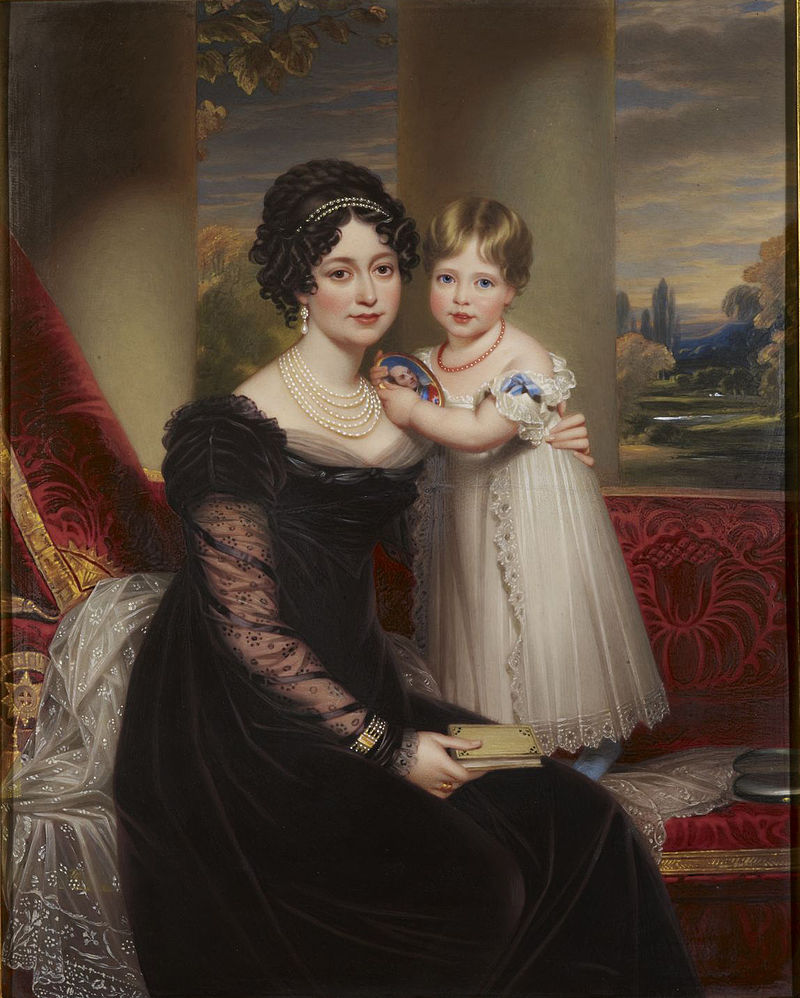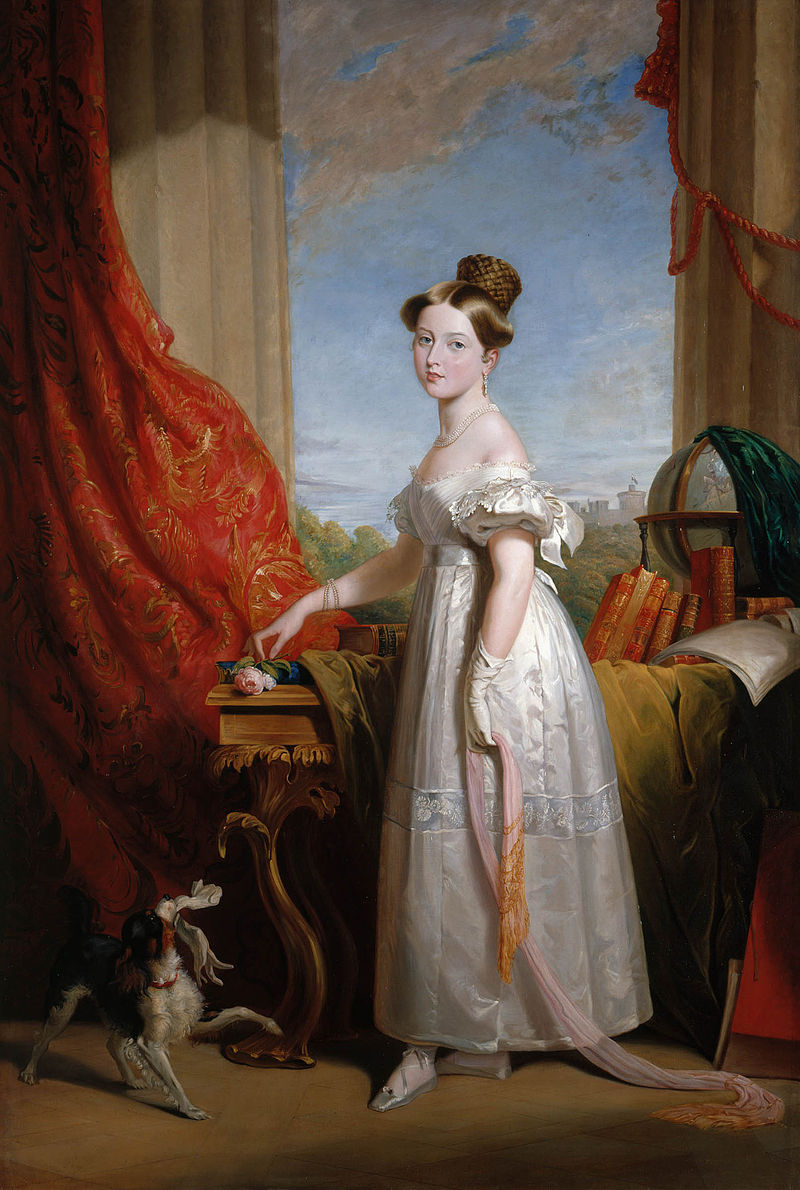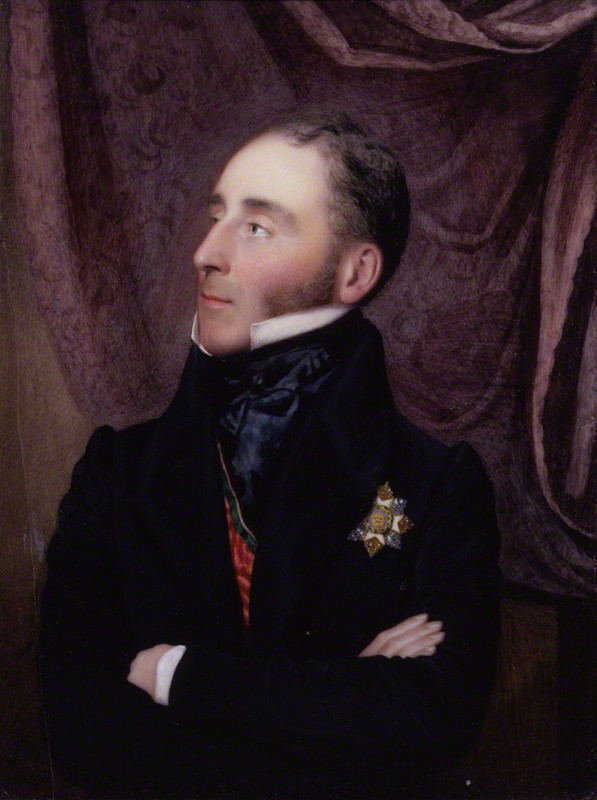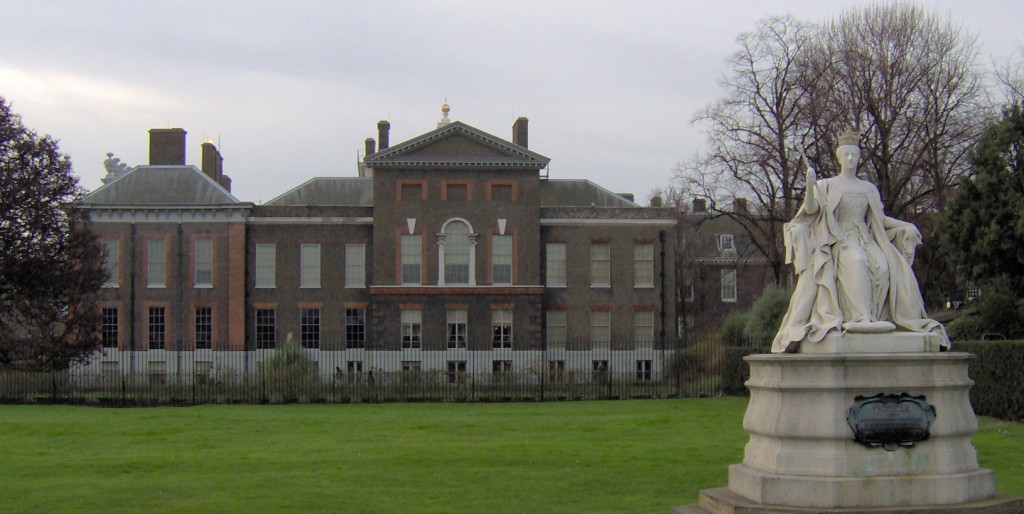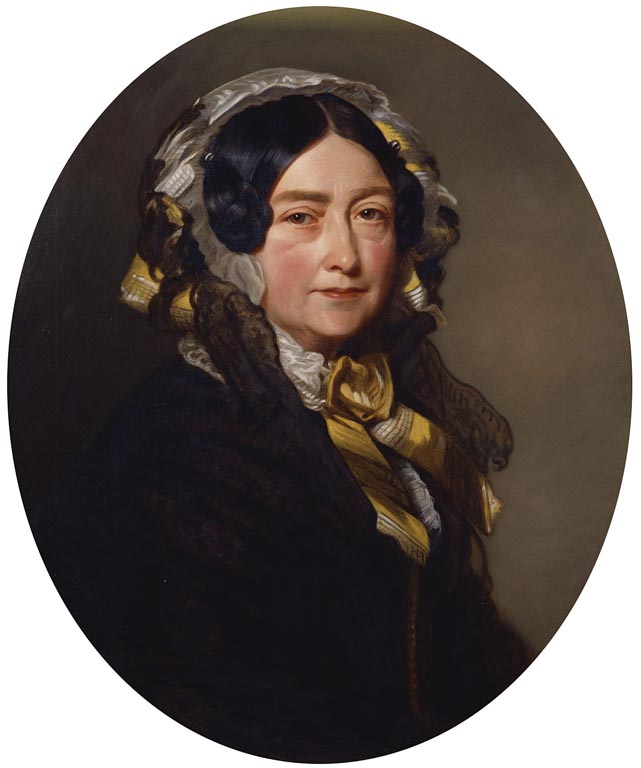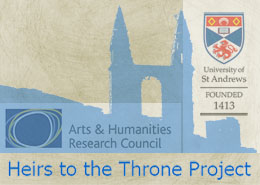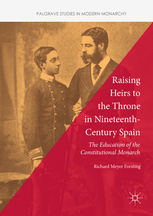How to educate a last minute heir: The Duchess of Kent and the Kensington System
Jennifer Henderson Crane
In 1861 Queen Victoria suffered a devastating loss that brought her to the brink of collapse. “The dreaded calamity has befallen us,” she recorded in her journal at Windsor Castle, “which seems like an awful dream, from which I cannot recover.” For those even remotely familiar with Queen Victoria, the image of the black-draped monarch is immediately evoked, a wife in perpetual mourning for the beloved husband she lost in 1861. However, the quoted line does not refer to the passing of Albert the Prince Consort, but instead to that of his paternal aunt and mother-in-law, Victoire, the Duchess of Kent, who passed away in March of the same year.
Victoria had an at times fraught relationship with her mother, but Victoire’s death appeared to erase the past difficulties and animosities, leaving her daughter feeling like a bereft child. She opened herself fully to her grief, so much so that her obsessive hold onto mourning protocol provoked much commentary even outside of court circles. In her work, Magnificent Obsession, Helen Rappaport quotes an American diplomat lamenting that, “‘the Queen carries her sorrow at her mother’s death to an absurd extent… There are no balls this season and in lieu thereof but one concert, and to this only the Ministers, and their Ladies and Chief Secretaries only are to be invited’.”
Just as Victoria held varying emotions for her mother, so too have historians held variant stances on Victoire, as well as on her perceived motives and ambition. Contradictions abound in her portrayals: she is both vindictive and weak-willed, a cold-hearted mother and a loving nurturer, and an interloping foreigner seeking riches and lonely widow trapped in her daughter’s future kingdom. As for Victoria, possessing a series of contradictions herself, her relationship with her mother led to her clinging even closer to Albert, the man ultimately responsible for bringing the two women together, and it is safe to conjecture that no one better than he knew of the history between Victoire and Victoria. This essay is a brief examination of Victoire, and her relationship with her royal daughter.
Princess Marie Luise Victoire, daughter of Duke Francis and Duchess Augusta of Saxe-Coburg-Saalfeld, was born in Coburg on 17 August 1786, in what was still the Holy Roman Empire of the German Nation. She was one of nine children; among their number an older sister, Juliane, became a Russian Grand Duchess while her younger brother, Leopold, eventually rose to be the first king of the Belgians.
If history had play out differently for Leopold, England might have played a bigger part in his life rather than that of his elder sister. In 1816 he married Princess Charlotte Augusta, the only child of the Prince and Princess of Wales, and the sole legitimate grandchild and heiress presumptive of her grandfather, George III. But Charlotte never lived to become queen, and Leopold never became her consort. Eighteen months after their wedding, she died at Claremont House in Surrey following the stillbirth of their first child.
At this time, November 1817, Victoire herself was already a widow. She had married Prince Emich Charles of Leiningen in 1803 at the age of seventeen (the bridegroom being more than twenty years her senior), and had had two children by him, Prince Charles and Princess Feodore. By the time the great marriage race amongst the remaining sons of George III got under way following Charlotte’s death, Victoire was a prime potential candidate, and had the added advantage of proven fertility. Ultimately she and Edward, the Duke of Kent, were the winners in the quest for an heir upon the birth of Princess Alexandrine Victoria on 24 May 1819, just five days short of their first anniversary. But whatever happiness Victoire enjoyed in her second marriage was short-lived. The Duke contracted pneumonia when he and his small family were in Sidmouth, and died on 23 January 1820 at the age of fifty-two. Less than a week later, his father George III also died; Victoire’s eight-month old baby was now third in line for the throne after her uncles Frederick, the Duke of York and William, the Duke of Clarence.
Victoire was now, for all intents and purposes, marooned in England. As he was his late father’s heir, Prince Charles, then in his mid-teens, was back in his principality of Leiningen while Feodore remained with her mother and sister. There were not enough funds for Victoire and her daughters to return to Coburg; even if there were, she felt it would be unwise for Victoria to leave English soil. Neither George IV nor Parliament were inclined to grant more than the minimum to the Duchess of Kent. According to Carrolly Erickson, one of Victoria’s biographer’s, Parliament granted the Duchess £6,000 a year. This compares unfavourably to the yearly £50,000 allotted to Leopold as Charlotte’s widower; out of this annual income the Duchess received £3,000 a year.
As for accommodations, Victoire and her daughters were allowed the use of a part of Kensington Palace. Kensington had been a royal residence since it was built in the seventeen century with William III and Mary II as its first residents. But by the time the Duchess and her daughters moved in, the palace was in a sorry state of neglect. This is an element empathised by Erickson who noted the young princess grew up in surroundings that were little more than dilapidated. Kensington was not one of Victoria’s favourite places. She once described it as “empty – empty, bare, dreary, and comfortless … nothing but bare walls and bare boards.” It is no surprise that, soon after becoming queen, she left the palace for good and entered the recently built Buckingham Palace, as its first sovereign resident.
They may have lived within a palace, but Victoire quickly found that her income of £9,000 was not nearly enough, especially as, with her husband’s death, she had inherited his debts. While it was still within the realm of possibilities that her sister-in-law Adelaide, the Duchess of Clarence, could still produce a living child, this seemed increasingly unlikely, and Victoria appeared to be headed for the throne. It is here where Victoire has been portrayed as a spendthrift; her daughter was the future of Britain and, as such, should present the appropriate image and live the kind of life an heiress should expect to live. But in this wish to present an expected image of royalty, therein lies a contradiction with the Duchess. She wanted the trappings that came with their exalted status, but did not wish Victoria to take her rightful place at the courts of both George IV and then William IV.
This has been perceived as both her desire that the Princess not be unduly influenced by the decadent Hanoverians, as well as Victoire wanting to impose her own sway and control over Victoria. There is an episode that features heavily in Victoria’s numerous biographies where the future queen was scooped up into a carriage carrying George IV and his younger sister Mary, the Duchess of Gloucester, for a ride. Witnessing this, Victoire was full of fear that her daughter would be taken from her by the king. Whether this episode served as a catalyst for her excessive control over Victoria is unclear; the Duchess herself left no memoirs, and it is possible such personal issues would not have featured even if she had done so.
What is clear is that Victoria was brought up away from the royal courts, and her father’s family, under a rigid structure known as the Kensington System. According to this, Victoria was never to be left on her own, but always had to have at least one adult in attendance. If not her mother, then her governess Baroness Louise Lehzen guarded the princess against any possible dangers, or undue influence. Even simple tasks, such as walking down the stairs, were treated with extreme caution; Victoria was required to hold the hand of her mother or Lehzen, or anyone else in charge. Socialisation with other high ranking children was not encouraged, with few exceptions, leaving Victoria isolated amongst a world of adults.Her adored sister Feodore married Prince Ernest of Hohenlohe-Langenburg in 1828 at Kensington Palace, and left for Germany where they would have six children. Victoria was not even permitted to sleep in her own bedroom, having instead to share one with her mother right up until she became queen.
The pride in her newfound independence is evident in the journal entry for the morning of her accession. Having been summoned to see the Archbishop of Canterbury and Lord Coyngham, she recorded that she “went into my sitting-room (only in my dressing gown), and alone, and saw them.” Later in the same entry, having reflected on the day’s duties, she continued in the same vein, meeting various dignities of her council “all in my room and alone… Took my dinner upstairs alone.” She additionally had a room made up and spent her first night by herself. If the Duchess had any personal motives behind the Kensington System, then she ultimately failed. Upon Victoria’s becoming queen came a period of estrangement with Victoire which lasted until, with Albert’s intercession, they reconciled.
There is a matter of debate about just who designed and implemented the Kensington System, and what it was meant to achieve. While the Duchess has received her fair share of the blame, and that during her own lifetime, the other half of the blame goes to Sir John Conroy, the comptroller of the Duchess, and former equerry of the Duke of Kent. The precise nature of their relationship is still unknown, although many historians are in concurrence that it was probably not sexual.
While there is agreement that Conroy possessed a hold of Victoire, there is much grey area as to the motives behind the pair. Katherine Hudson’s book, A Royal Conflict, is a considerably more sympathetic take on Conroy, and others empathise the Duchess’s desire to merely bring her daughter up properly as befitting the heir to the throne. The 2009 film The Young Victoria presents Victoire as both firmly under the control of her comptroller, but also as one defiantly set on her own goals of a regency if William IV died before Victoria’s eighteenth birthday. As it turned out, there was no need of a regency as the king lived past his niece’s milestone. William IV was suspicious of Conroy (he was not fond of the Duchess either), and plainly saw him as the one aching for power when his niece came to the throne.
In an incident portrayed in the film, as well as in countless books, the king made his feelings for the pair crystal clear during his birthday dinner in 1836. In front of his guests, William IV said he hoped his life would be “spared for nine months longer… I should then have the satisfaction of leaving the exercise of the Royal authority to the personal authority of that young lady, heiress presumptive to the Crown, and not in the hands of a person now near me, who is surrounded by evil advisers and is herself incompetent to act with propriety in the situation in which she would be placed.”
Such a public outburst demonstrates the contemporary assumption that the Duchess and Conroy were intent on controlling the crown through Victoria if there was to be a regency. After becoming queen, Victoria excluded Conroy from both the Proclamation and Coronation as well. Following her reconciliation with her mother, Victoria firmly established Conroy as the sole villain. At his death in March 1854, she noted that she “heard from Mama that Sir J. Conroy is dead! It has naturally shocked her very much, bringing back to her memory so many recollections of a painful nature. He is dead & with him will be buried the recollection of the many sufferings he caused us both!”
Victoire’s death brought back such feelings, and she evidently held him responsible for all the trouble with her mother before her reign, and that she “regretted the sorrow & distress beloved Mama had often undergone & the misunderstandings, so often caused by others.” Victoria’s memories became clouded, and her grief erupted again when, upon going through her mother’s belongings, she discovered a trove of childhood mementoes Victoire had saved, including a notebook wherein she recorded her daughter’s milestones in learning to walk and when she lost each baby tooth. Victoria rejoiced that her mother had held “such tender care & love & affection for me!”
However touching these words are, there is a caveat that must be taken with her journals at this point in the collection of Victoria’s writings. In the time leading up to her death in January 1901, she had charged her youngest daughter, Princess Beatrice, to edit her journals and extract anything deemed not for public consumption. Beatrice promptly carried out her mother’s wishes, and excised much in the way of personal details, and, in many cases, completey rewrote entries. This is apparent when comparing Beatrice’s edits against transcripts made by Lord Esher, Reginald Brett; fortunately, due to his work, a selection of journals from early in her reign survive, leaving Victoria’s original words intact, thereby showing just how her daughter fulfilled her brief. Therefore, these references to her mother and childhood should be taken with the proverbial grain of salt.
Whatever Victoire’s motives in raising her daughter in the Kensington System, if she had any indeed, it cannot be argued that it was a complete failure in that it afforded Victoria the chance to depend upon herself, however briefly before her marriage to Albert. Victoria may have had a few misjudgements in the first ten years of her reign, but ultimately became a force with which to reckon. She was by no means a perfect or even an ideal monarch, but, having endured such an upbringing it may well have shown her what kind of queen she wanted to be. In many ways, having endured the loss of both her mother and husband within the space of nine months may go a long way in understanding the degree of Victoria’s mourning following December 1861 when Albert died.
Suggested further reading:
- Erickson, Carrolly, Her Little Majesty (2004).
- Hudson, Katherine, A Royal Conflict: Sir John Conroy and the Young Victoria (1994).
- Kensington Palace History
- Queen Victoria’s Journals
- Rappaport, Helen, Magnificent Obsession: Victoria, Albert, and the Death that Changed the Monarchy (2011).
- Williams, Kate, Becoming Queen (2009).

